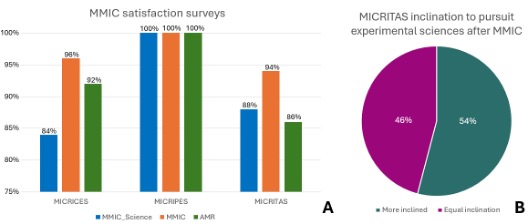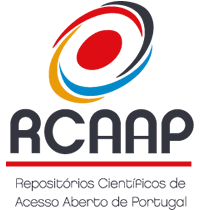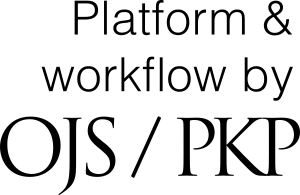MicroMundo@IUCS_CESPU (2022-2024): uncovering soil’s hidden treasures and its impact on science and antimicrobial resistance awareness
DOI:
https://doi.org/10.48797/sl.2025.325Keywords:
Selected Oral CommunicationAbstract
Background: MicroMundo@IUCS_CESPU (MMIC) is a service-learning pedagogical approach allowing university/school students to expand their knowledge on soil biodiversity, antimicrobial resistance (AMR) and experimental sciences [1]. School students experience a real research project by processing soil samples and looking for potential antibiotic-producing microorganisms [2,3]. Objective: To evaluate past MMIC editions’ results (2022-2024) and to explore clinically-relevant antibiotic-resistant bacteria (CAB) in soils gathered within the project. Methods: University students (n=23), guided by professors, led 12 sessions for basic/secondary Cristelo school students (n=60). At MMIC end, promising soil colonies with antibiosis activity against Escherichia coli and/or Staphylococcus epidermidis were saved. A post-survey evaluated student experiences. After MMIC, soil samples underwent more analysis, including extended antibiosis assays using additional species and multidrug-resistant (MDR) strains, and screening for CAB using selective media for Enterococcus (Slanetz-Bartley with/without ampicillin or vancomycin) and Enterobacterales (MacConkey with/without cefotaxime, Coliform Chromogenic, Hicrome Klebsiella Selective agar) identification. Typical colonies were identified by MALDI-TOF and antibiotic susceptibility was tested by disk diffusion (EUCAST/CLSI). Results: Most students increased their interest in Science (86% on average) and AMR awareness (89% on average) (Fig.1). Of 26 soil samples processed, 310 colonies were tested, with two Bacillus cereus thuringiensis isolates from a moist agricultural soil in Cristelo showing antimicrobial activity against E. coli,S. epidermidis, S. aureus, besides MDR E. coli and S. aureus. Among CAB isolated from soils, E. faecium (n=11) showed tetracycline (64%) and erythromycin (9%) resistance. Within Enterobacterales (n=10; 30% MDR), species included E. coli (60%), Citrobacter braaki (20%), Escherichia marmotae (10%), and Klebsiella aerogenes (10%), with resistance to ampicillin and amoxicillin+clavulanic acid (40% each), cefotaxime and gentamicin (30%), aztreonam (20%), sulfamethoxazole+trimethoprim and tetracycline (10% each). Conclusions: The MMIC project is positively impacting students’ AMR awareness. Our findings highlight soil as both a valuable reservoir of antibiotic-producing bacteria and a potential source of MDR bacteria, reinforcing its role in the One Health fight against AMR, and the revival of antibiotic discovery.
Figure 1. MMIC satisfaction surveys. A. MICRICES indicate school students, MICRIPES indicate school professors and MICRITAS indicate university students. B. MICRITAS inclination to pursuit experimental sciences after MMIC.
References
1. Gil-Serna, J. et al. Citizen Science to Raise Antimicrobial Resistance Awareness in the Community: The MicroMundo Project in Spain and Portugal. Microb. Biotechnol 2025, 18, e70123.
2. Walsh, F. & Duffy, B. The Culturable Soil Antibiotic Resistome: A Community of Multi-Drug Resistant Bacteria. PLoS One 2013, 8.
3. Sabença, C. et al. Assessment of Antibiotic Resistance Among Isolates of Klebsiella spp. and Raoultella spp. in Wildlife and Their Environment from Portugal: A Positive Epidemiologic Outcome. Pathogens 2025, 14, 1–16.
Downloads
Published
How to Cite
Issue
Section
License
Copyright (c) 2025 Beatriz Antunes, Patrícia Pacheco, Simão Bettencourt, Luís H. Quinta, Rúben Rodrigues, Ricardo Jorge Dinis-Oliveira, Carla Miranda, Sandra Quinteira, Ana R. Freitas

This work is licensed under a Creative Commons Attribution 4.0 International License.
In Scientific Letters, articles are published under a CC-BY license (Creative Commons Attribution 4.0 International License), the most open license available. The users can share (copy and redistribute the material in any medium or format) and adapt (remix, transform, and build upon the material for any purpose, even commercially), as long as they give appropriate credit, provide a link to the license, and indicate if changes were made (read the full text of the license terms and conditions of use).
The author is the owner of the copyright.









